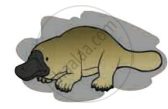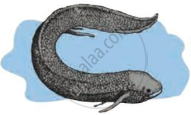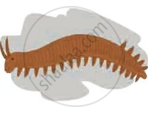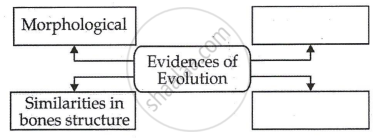Advertisements
Advertisements
Question
Explain with an example for the given, how the following provides evidence in favor of evolution in organisms :
Homologous organs
Solution
Homologous organs:- Organs which have the same basic structure but different functions are called homologous organs.
Example:- The forelimbs of a man, lizard, frog, bird, and bat have the same basic design of bones, but they perform different functions. The forelimbs of a man are used for grasping, the forelimbs of a lizard are used for running, the forelimbs of a frog are used to prop up the front ends of the body when at rest and the forelimbs of a bird and bat are modified for flying. Hence, all these organisms use their forelimbs for performing different functions, but the forelimbs have originated from the same structural pattern.
APPEARS IN
RELATED QUESTIONS
Explain with an example for the given, how the following provides evidence in favor of evolution in organisms :
Fossils
How do homologous organs help in providing evidence for organic evolution?
There are five animals A, B, C, D and E. The animal A uses its modified forelimbs for flying. The animal B uses its forelimbs for running whereas the animal C uses its forelimbs for grasping. The animal D can live on land as well as in water and uses its forelimbs to prop up the front end of its body when at rest. The animal E which respires by using spiracles and tracheae uses wings for flying but its wings are analogous to the modified forelimbs of animal A.
(a) What could the animals A, B, C, D and E be?
(b) Why are the forelimbs of animals A, B, C, D called homologous organs?
(c) What does the existence of homologous organs in animals A, B, C and D tell us about their ancestors ?
(d) Why are the modified forelimbs of animal A and the wings of animal E called analogous organs?
(e) State whether animals A and E have a common ancestor or not.
Differentiate between connecting links and the missing links.
Which evidence of evolution is shown in the given picture? Explain the importance of this evidence.

Write the answers to the questions by observing the figure below.
 |
 |
 |
| (a) | (b) | (c) |
- Write the name of the animal ‘(a)’ in the figure.
- Write the name of the animal ‘(b)’ in the figure.
- Write the name of the animal ‘(c)’ in the figure.
- Which evolutionary evidence is illustrated by this figure?
- Write the definition of that evidence for evolution.
The degenerated and non-functional organs found in an organism are called ______.
What are we referring to? When we say 'simple organisms' or 'complex organisms'.
How do we compute the age of a living tree?
Complete the following conceptual picture:

